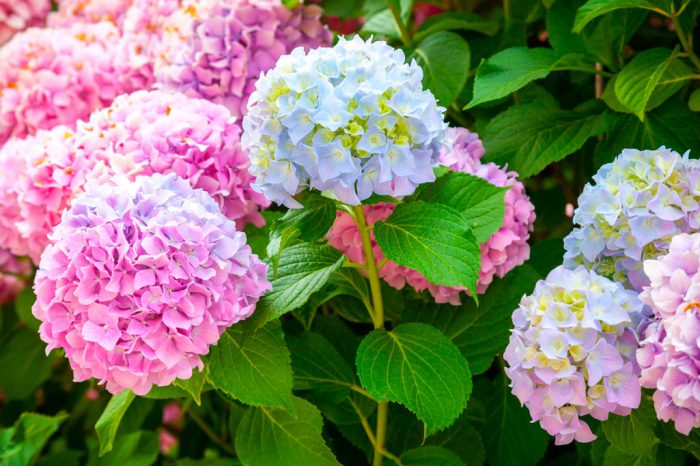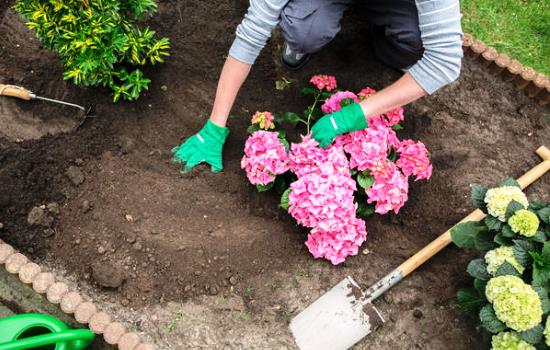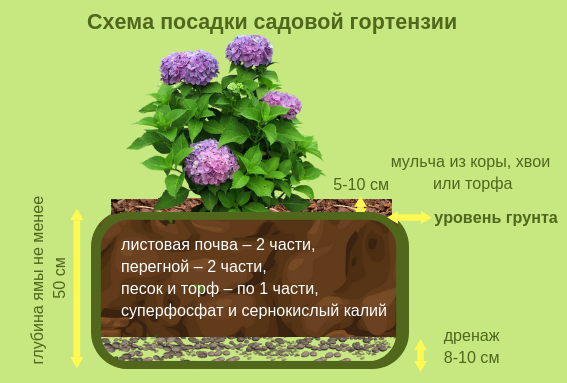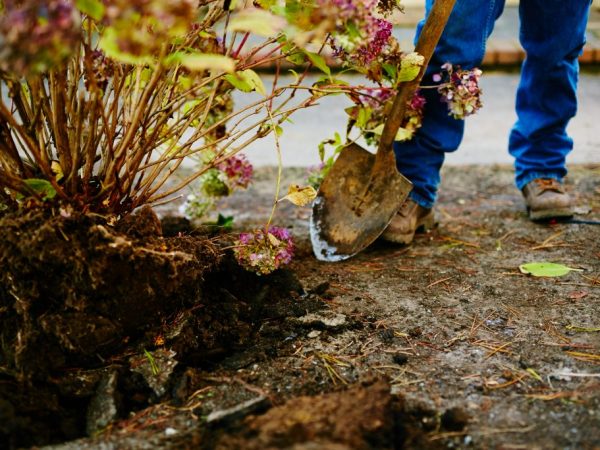Content:
There is not a single gardener who has not been conquered by a hydrangea. This fragrant flower will not leave anyone indifferent. In addition, it will delight with its flowering throughout the summer season. Delicate, balloons of inflorescences become a decoration of any garden.
But there come times when the plant needs to be moved to another location. Here gardeners do not know how to do it correctly. It was at this time that questions arise: how to transplant a hydrangea, when it can be done. This will be discussed in the article.
Why do I need a hydrangea transplant
For the abundant flowering of hydrangeas, proper care of the plant is necessary, in particular, correct and timely transplantation.
Before you know when to transplant a hydrangea, you need to know the reason that compels you to perform this action.
A transplant is done when:
- The place where it is planted does not fit the flower, it starts to hurt and practically does not grow.
- The plant is planted in the wrong place and interferes with people.
- The soil under the hydrangea is severely depleted. Everyone knows that a culture can grow in the same place for ten years. But it is still recommended to replant it every five years.
- The indoor plant species has grown greatly, and the pot has become too small for him.
Many are interested in the question: when can a hydrangea be transplanted from one place to another. You should consider the transplant process in more detail.
Timing for transplant
There are several types of hydrangea shrub:
- Tree-like;
- Paniculate;
- Large-leaved.
Transplant rules for all these species are almost the same.
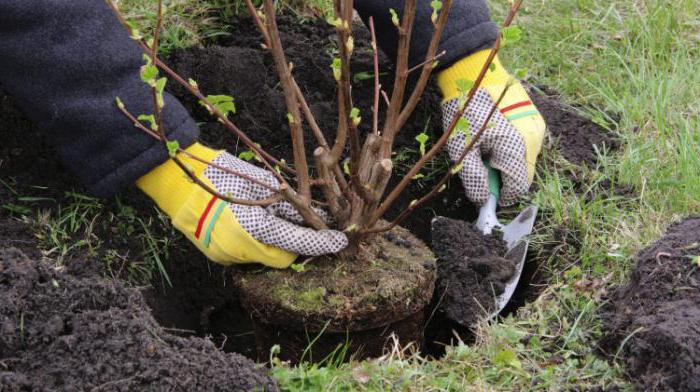
Remember that hydrangea does not like frequent replanting, so you need to carefully consider the place for planting.
Professionals recommend replanting hydrangeas in the spring or fall. But there are times when an urgent transplant is needed for a plant, which is done in the summer months. Still, it should not be planted during a period when flowers bloom magnificently on the bush. The active flowering period of the culture falls at the beginning of July and lasts until the end of August. Before transplanting a hydrangea to a new place in the summer, remember that the plant will not bloom next year.
In the spring, the transplanting process should be carried out even before the plant begins to wake up and bud open. At the same time, not a single gram of snow should remain on the ground. The only thing that saddens with a spring transplant is that the plant first of all tries to adapt to a new place, restores the functionality of the root system, while not forming buds.
It is best to replant the crop in the fall. At what time it is best to perform this procedure depends on the region of Russia where the plant grows. In most cases, they do this in the first or last decade of September. In this case, the shrub takes root in a new place and tolerates winter well.A houseplant is recommended to be transplanted into a new pot in the month of April.
Transplanting hydrangeas in spring
Before transplanting a hydrangea, you need to choose the right place where it will grow comfortably. The best place for this is a place that is in partial shade and is completely protected from winds and drafts. This culture is very demanding on the composition of the soil. Most of all, the culture likes the soil, which contains humus.
In addition, it is imperative to cultivate the soil surface and revitalize it with mineral fertilizers. Acidity is of great importance. With low or high acidity, the hydrangea will bloom in a completely different color than expected. If the gardener expects to get pink flowers, then if the acidity of the soil does not match, the flowers may be blue.
You need to dig out the bush together with a lump of earth. Thus, the plant will receive a minimum of stress caused by transplanting. The shrub must be carefully dug from all sides, carefully removed and put on the prepared canvas. After that, the plant is carefully transferred to a new planting site. After several years, a hydrangea can grow two or even three meters. Thus, the transplant becomes very difficult to do. Some types of mature shrub can be pruned before transplanting.
In the process of transplanting, care must be taken not to damage the shoots of the plant. Before transplanting, those crops that grow low, reaching a maximum of one and a half meters, are not cut off.
After the bush has been dug up, it must be immediately planted in the soil in a new location. The hole in which the bush will be planted needs to be dug out more than a lump of soil on the root system. Compost and sour peat are placed on the bottom. A shrub is placed on the prepared pillow and watered with water. Next, the hole should be covered with fertile soil, compacted and watered.
After the bush is transplanted, be sure to ensure that the soil near it does not dry out, otherwise the plant will die. To keep the soil moist for a long time, you need to use mulch.
To do this, you can use:
- Tree bark;
- Agrofibre.
This procedure not only retains moisture, but also prevents weeds from growing. A shrub planted in direct sunlight needs to be protected from radiation. To do this, you can use the shading grid.
Transplanting hydrangeas in autumn
Hydrangea should not be repotted very often. For this reason, choosing a place where it will grow and savor must be very serious and careful. The territory should be illuminated by the sun's rays, along with this, a little shaded by tree branches.
The hole must be dug at least fifty centimeters. If you plan to plant several shrubs at once, then you should definitely adhere to the correct distance so that subsequently overgrown shrubs do not interfere with each other.
Peat, sand, humus and other mineral fertilizers are placed in the pit, which will contribute to the rapid engraftment, growth and development of the plant. It is best to replant plants that are no more than five years old. It is at this age that the culture is able to resist diseases.
In the new place, the plant will develop faster than in the old one. If the acidity of the soil is much higher, then the flowers can become completely different color.
Than an autumn transplant is better
Transplanting hydrangeas is possible both in spring and autumn. But the fall period has its advantages.
During the transplant process, there is a risk that the root system may be damaged.In the spring the plant needs to develop, which is not entirely possible with diseased roots. In autumn, the roots are in a dormant state and during transplantation they will not experience severe stress. By spring, the plant will take root in a new place and will be able to bloom.
Flowering plant cannot be transplanted. In this case, it will not take root well in a new place and may die.
Proper care after transplant
The normal growth and development of a newly transplanted plant depends not only on the transplant itself, but also on how the gardener will properly care for the plant. In the autumn period, the rains begin to fall much more often than in the spring or summer, so you need to water the plant much less often.
For watering, use only purified soft water. The plant does not tolerate lime at all. It is best to collect rainwater, ideal for watering hydrangeas. Tap water needs to be settled and heated for some time.
To avoid plant disease with leaf chlorosis, the liquid must be softened with the help of components such as:
- Lemon juice;
- Vinegar;
- Several grams of electrolyte.
In addition, to avoid crop diseases, iron salts are added to the soil:
- ferrophyte,
- iron chelate,
- inkstone.
For hydrangea to bloom magnificently, it needs a lot of minerals, so fertilizers are applied at least four times a year.
If the gardener wants to change the color of hydrangea flowers, he needs to add iron salts and alum to the soil twice a month. If alum is introduced into the soil only on one side, on the other - to leave the soil in the same composition, then on one shrub you can get inflorescences of different colors. In order to see how a changeable flower changes color of inflorescences, you need only about ten crystals of ammonium-potassium or potassium alum, diluted in two liters of water.
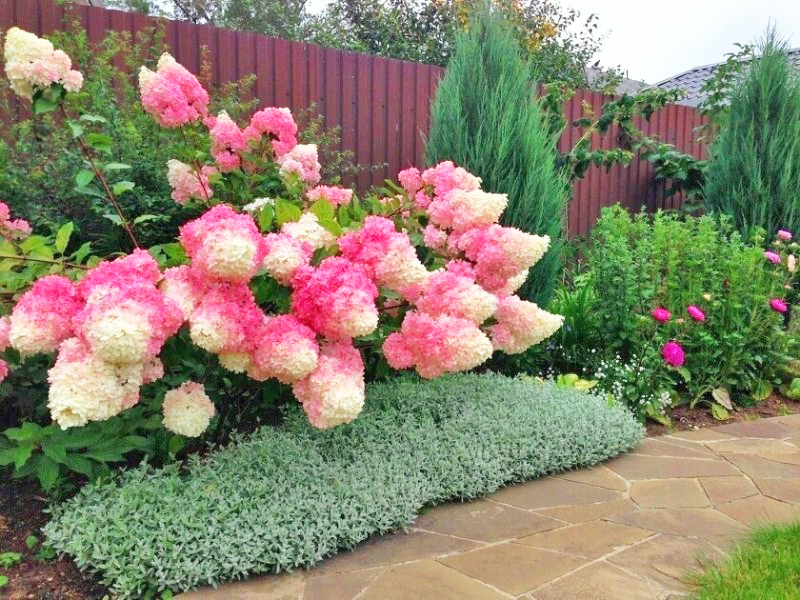
Hydrangea can help refresh and decorate your garden. Only one bush is able to transform the planting into a luxurious alley with marvelous inflorescences
For top dressing, in most cases, organic fertilizers such as mullein are used. Of the mineral - ammonium sulfate, potassium sulfate are suitable.
Fertilizers are applied three times throughout the season:
- In early spring to form strong shoots;
- In June, before buds begin to form;
- During the summer months, when the culture is in full bloom.
In order to avoid the appearance of rot on the root system in the first year after transplanting, it is recommended to water the plant with a weak solution of potassium permanganate or any other fungicide.
In the autumn months, it is recommended to prune shrubs, while remembering to process the cut points. It is not worth pruning the plant too much; instead, it is better to cut off the leaves at the base of the shrub. If the plant is planted in a region with a harsh winter climate, then it should be hilled in preparation for wintering.
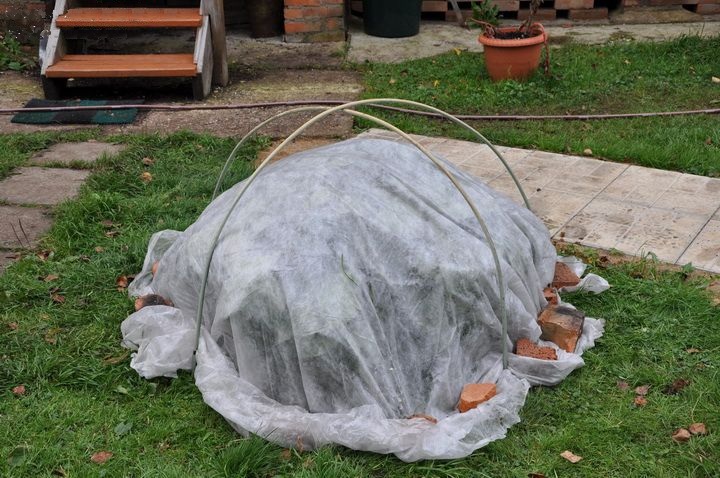
A rather warm and snowy winter period allows even species that love warmth (serrated and large-leaved hydrangea) to winter without shelter. However, it should be borne in mind that winter will be frosty or warm, no one knows exactly how and how much snow will fall. Better to be safe ...
In Siberia and the Moscow region, it is important to properly prepare the plant for wintering. To do this, in the second decade of October, in addition to hilling, the plantings should be covered with agrospan or perforated plastic wrap folded in two layers. In the last days of October, the leaves of the bush are bent to the ground and covered with dry fallen leaves or spruce branches.
Transplanting a room hydrangea
Transplanting a room hydrangea is a very important process. The first time it is done immediately after buying the plant. The reason for this is the possibility of contamination of the soil with a mealbug. The procedure should be done at the first suspicion of a disease.
With each transplant, the dishes need to be four centimeters larger in diameter. Many are interested in why it is not worth planting a crop immediately in a large pot. The fact is that in this case the hydrangea will feel freedom and will increase the green mass instead of forming buds.
When the culture grows to such a size that it will no longer be possible to select the desired container size, then the bush needs to be rejuvenated, that is, divided into small bushes. Hydrangeas, like no other flower, need moisture. For this reason, watering and spraying must be done regularly, the water must be warm.
Potted hydrangeas also need to be fed. Do this at a time when it is actively developing.
Also, you cannot keep the plant in a draft. From this it can get sick and die.
Caring for transplanted room hydrangea
In order for the acclimatization of the transplanted potted plant to pass without loss, you need to properly care for the crop during the first two weeks. Throughout this period, it is necessary to keep the flowerpot in partial shade and constantly monitor the condition of the soil so that it is not too wet or too dry. After each watering process, the soil surface must be slightly loosened.

An annual transplant, which is best done in the fall, after the plant has faded, contributes to a beautiful flowering.
After two weeks, the plant can be put in the place that was chosen for it. It should be remembered that hydrangea does not tolerate drafts, if you open the windows, and direct sunlight. Provided that the loggia or balcony is protected from wind and sun, the plant can be grown there.
Expert advice
Since hydrangea is an unpretentious plant, it is able to grow, develop and delight the eye with lush flowers, even in those places that are heavily gassed with car exhaust gases. At home, the plant should still be properly cared for.
Since the crop prefers a large amount of moisture and can grow in swampy places, the soil in the root zone must be constantly watered. This is especially important in the hot summer period. Watering is done once a week, while at least thirty liters of water must be poured under one plant. Experts also recommend using a weak solution of potassium permanganate for soil disinfection.
With the help of blooming hydrangeas, you can transform the garden landscape beyond recognition. You can plant several types of culture in the garden at once and enjoy their lush flowering.
